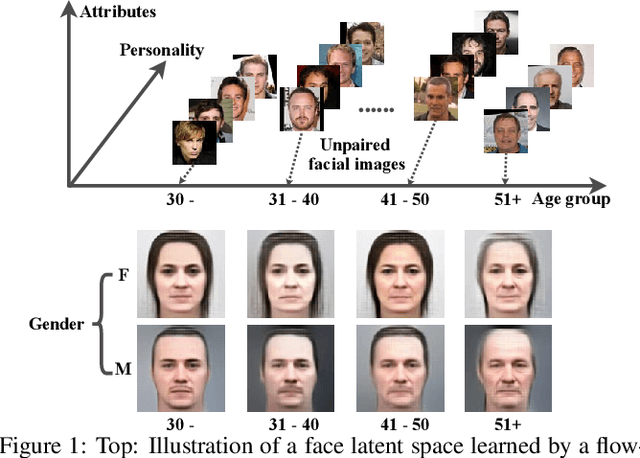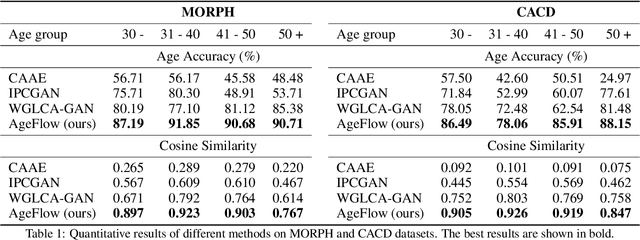AgeFlow: Conditional Age Progression and Regression with Normalizing Flows
Paper and Code
May 15, 2021



Age progression and regression aim to synthesize photorealistic appearance of a given face image with aging and rejuvenation effects, respectively. Existing generative adversarial networks (GANs) based methods suffer from the following three major issues: 1) unstable training introducing strong ghost artifacts in the generated faces, 2) unpaired training leading to unexpected changes in facial attributes such as genders and races, and 3) non-bijective age mappings increasing the uncertainty in the face transformation. To overcome these issues, this paper proposes a novel framework, termed AgeFlow, to integrate the advantages of both flow-based models and GANs. The proposed AgeFlow contains three parts: an encoder that maps a given face to a latent space through an invertible neural network, a novel invertible conditional translation module (ICTM) that translates the source latent vector to target one, and a decoder that reconstructs the generated face from the target latent vector using the same encoder network; all parts are invertible achieving bijective age mappings. The novelties of ICTM are two-fold. First, we propose an attribute-aware knowledge distillation to learn the manipulation direction of age progression while keeping other unrelated attributes unchanged, alleviating unexpected changes in facial attributes. Second, we propose to use GANs in the latent space to ensure the learned latent vector indistinguishable from the real ones, which is much easier than traditional use of GANs in the image domain. Experimental results demonstrate superior performance over existing GANs-based methods on two benchmarked datasets. The source code is available at https://github.com/Hzzone/AgeFlow.
 Add to Chrome
Add to Chrome Add to Firefox
Add to Firefox Add to Edge
Add to Edge